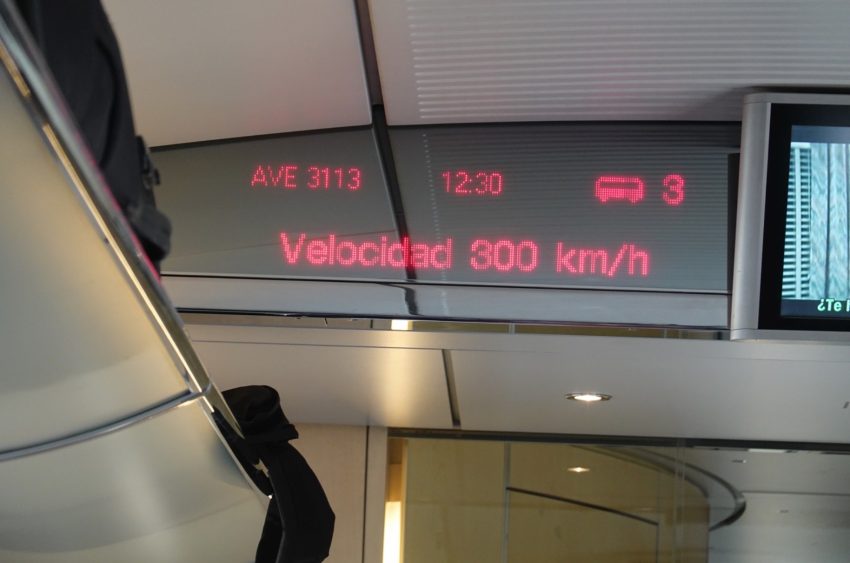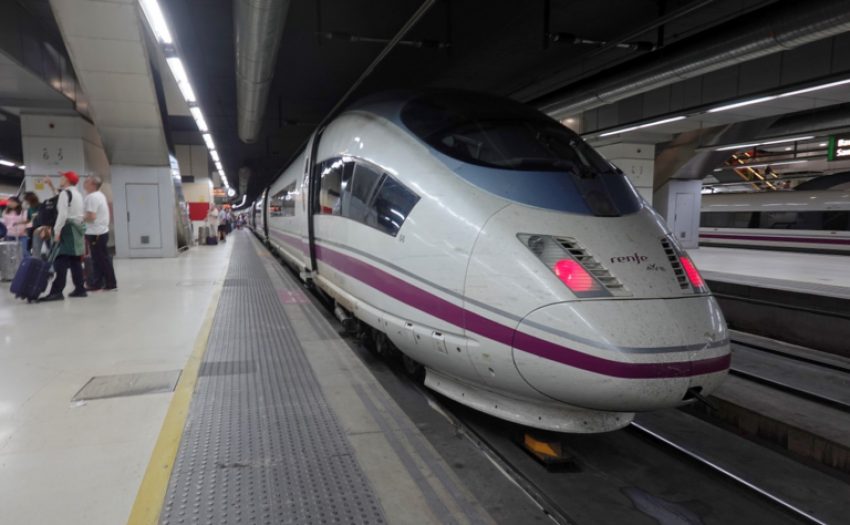
This week I travelled at 300km/h on the very, very fast train from Madrid to Barcelona. It covered the 625 kilometres in three hours, an average of 208km/h. This included four or five stops on the way.
The train goes to and from the centre of each city every hour in the main part of the day for $65 with more legroom than Qantas business class, free wifi and a quality dining car.
The distance is not much less than the distance between Sydney and Melbourne. Madrid’s population is 3.2 million and Barcelona’s 1.6 million, much lower than that of Sydney and Melbourne. Spain’s median income is about two-thirds that of Australia.
A Melbourne-Canberra-Sydney-Brisbane very fast train should be obvious for Australia. Why not?
It can only come down to cultural attitudes and political unwillingness for fear of upsetting the existing transport duopoly. But that will have to change if we are going to staunch the worst effects of our self-inflicted wound of high population growth.
Right now, Australians like their cars first, but if the distance is too great they want to fly.
Australia’s approach to transport is quite maddening. If we are determined to be so stupid as to allow massive immigration that stresses our environment and infrastructure can we at least apply some intelligence to deal with the consequences.
Opposition Leader Anthony Albanese said a very-fast train should be a no-brainer. He told The Sydney Morning Herald conference on population and settlement that Australians’ quality of life will become worse unless we deal with public transport.
The Coalition virtually junked Federal funding for public transport when it came to power in 2013. It moved it to roads and airports. The only rail it is interested in is the inland rail to move freight to and from their mates’ farms.
State Governments are struggling to deal with the consequences.
The NSW Minister for Planning, Rob Stokes, pointed out that Sydney is at the mercy of the Federal Government’s immigration quotas which are usually determined by Treasury’s desire to ensure GDP growth no matter what.
Stokes wanted population, settlement and planning not to be driven by Treasuries.
He said: “What we should not do is use population as a political football. Nor should we use a population increase as a lazy proxy for economic growth. Ultimately, the growth that matters is expanding the capacity, choice and opportunity for every Australian, wherever they live, rather than a focus on growing our population for its own sake.”
He is misguided here. Governments in Australia have never “focused on growing our population for its own sake”. In the immediate post-war early years of immigration we increased population for security reasons. “Populate or perish” was the mantra.
By about 1980 Australia’s population had a pleasant cultural mix and the economies of scale were such that we had probably reached peak benefit and we really did not any deliberate immigration program.
By then, however, the big businesses that profited most from high immigration, especially those who made windfalls by rezoning land, did not want it stopped. Indeed they wanted it increased and the then Prime Minister John Howard, in the thrall of his big-business benefactors, turned on the tap, and in effect lost control of Australia’s borders.
And now, as this week’s conference and an earlier meeting of planning ministers revealed, politicians and big business will continue to put the cart before the horse. “We must spend more on infrastructure to deal with the congestion and pressure caused by population growth,” they squeal.
What about the more obvious plea: “We must reduce population growth so we do not have to desperately scramble to keep up with infrastructure demands?”
We know why: the profits and power of the donors to the major parties coupled with a fear that anyone who wants to reduce immigration will be branded a racist.
But if that high population growth is the given, several things will flow. First is overall lower living standards. The mantra of Australia having had the longest period of continuous economic growth in history and therefore we are better off is bunkum. The headline figure is misleading propaganda peddled by governments.
The real test for economic well-being is GDP per person (per capital GDP). If you account for Australia’s astonishingly high population growth, we have been in recession for the past year with falling per-capita GDP compounded by growing inequality.
If you take further account for the reduction in quality of life with congestion and environmental damage the reduction in living standards is even worse.
Secondly, we will have to change the way we do transport, as state governments of both complexions well know.
We are going to have to collectivise more. Shock, horror. People will not be able to take their own half a tonne of steel with them on every city journey. Many people will not able to store a car in the big cities. The land cost will be too high. We will have to move to more sharing, electric and even autonomous vehicles.
We will have to develop a fast train network between Melbourne-Canberra-Sydney-Brisbane and even Adelaide and much more light rail in cities. Interest rates are very low. Governments should stop worrying about the surplus and invest while conditions are good: cheap capital and available labour.
Yes, we need roads, but they have to connect to efficient public transport. Roads and tollways on their own will not do it. They are too costly and just get clogged as soon as they are built because of the inherent inefficiency of cars.
Bring on the trains – very fast.
CRISPIN HULL
This article first appeared in The Canberra Times and other Australian media on 28 September.

You should know that the 200km/h British UK high speed train has been taken out of service. The 250 km/h Japanese Shinkansen has also been taken out of service. The British HST had been in service since 1980 (almost 40 years) The first Shinkansen was in service for the Tokyo Olympics in 1964. That’s how far we are behind. If we had an Eastern 300km/h fast train, we would not need Badgery’s Creek Airport. Practically, people will commute up to 2 hours each way per day, making Albury quite practical to live in while working in the cities. Melbourne Canberra and Sydney Airports would almost be interchangeable on International flights. City centre to city centre, would be the same time by train or plane. I’ve written a paper (would you like a copy?) and sent it to Albanese and Morrison and not even had an acknowledgment of receipt. Money has never been so cheap. Now HAS to be the time for the VHST to be built.
Hi Crispin,
My thoughts are I share your frustration having travelled in Germany and see how they do things.. but one comment I have is…
Your article is correct in many aspects except for two keys facts which mean we can’t do HSR on land rail lines at ground level, however we can do “maglev” fast trains. This is because
1. Aust. Governments never had the foresight to make large land based rail corridors and it needs a 22k arc to turn at 200kph… That means we can’t go down the middle of the Hume or Princes highways for much of the journey.
and 2. we have plentiful big wildlife e.g. kangaroos that are hard to contain. A land based line also has a 7 klm noise corridor and would require wildlife fencing at enormous expense.
The answer here for Aust is magnetic levitation trains – its quieter; faster (500kph) and runs on piers above the ground and therefore it could also traverse right through state and national parks without much impact shortening the route.
‘Bring on Maglev HSR” is a more accurate mantra.
Paris-Bordeaux is similar, brilliant 2 hr 20 run for 500km plus. But inter-city rail will never happen here. It looks suspiciously like a public good. Unlike the immigration and property sectors, there’s no “Aussie mates” lobby for rail, buying up LibLab politicians at third-world prices.
Consider the wounded screams, when little old Canberra voted for innocent light rail in 2016. When they built phase one and we punters all jumped on, still the outrage persisted. With Jon Stanhope in the vanguard.
Amen Crispin! Contain immigration numbers and build proper infrastructure. It fills me with a kind of mute fury that we can’t seem to ever get public transport right in Australia. If Spain can have a fast train between Madrid and Barcelona why on earth can’t we? The economic benefits of building a fast rail network between cities and larger country towns far out-weighs the initial (very high) cost. This Government should stop obsessing about the jolly surplus … it’s not as if running Australia is the same as running a household budget. I don’t understand why they aren’t borrowing at historically favourable rates and investing that money in building fast train networks and good urban public transport. It would bring untold long term benefits: employment opportunities, revitalisation of country towns, decongesting of major cities, less social isolation, less reliance on cars, better quality of life. And, with the climate crisis, it would all be so much better for the environment. It’s a no-brainer. Why can’t we just do it? Oh wait, I forgot. This Government has no vision.
Well said. Having traveled on very fast trains in Europe and Asia, I wonder when Australia will enter the 21st century